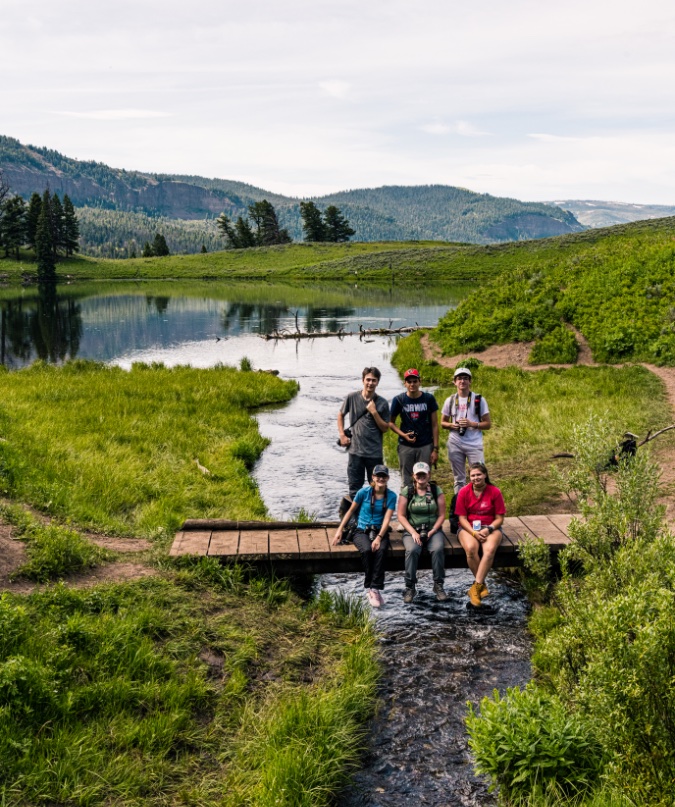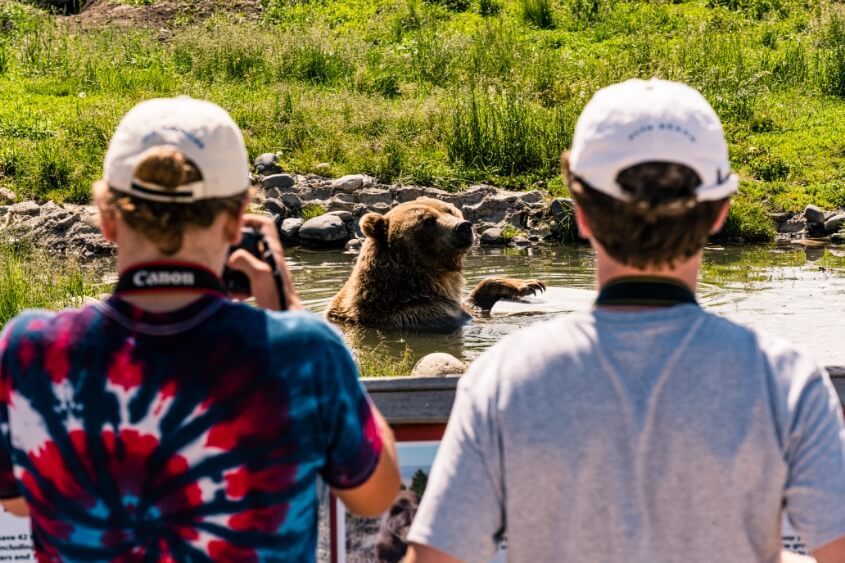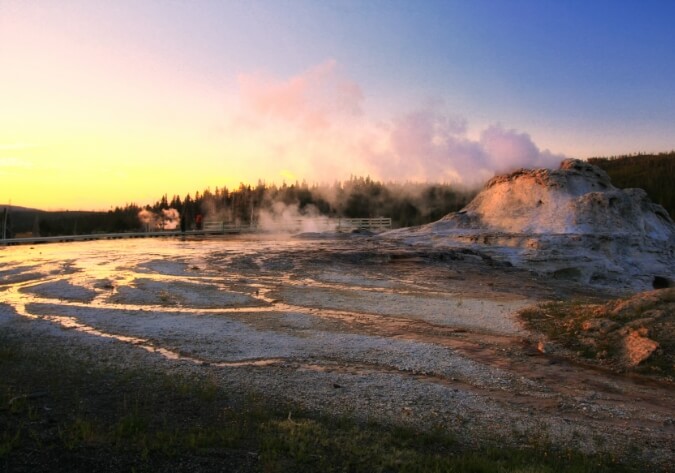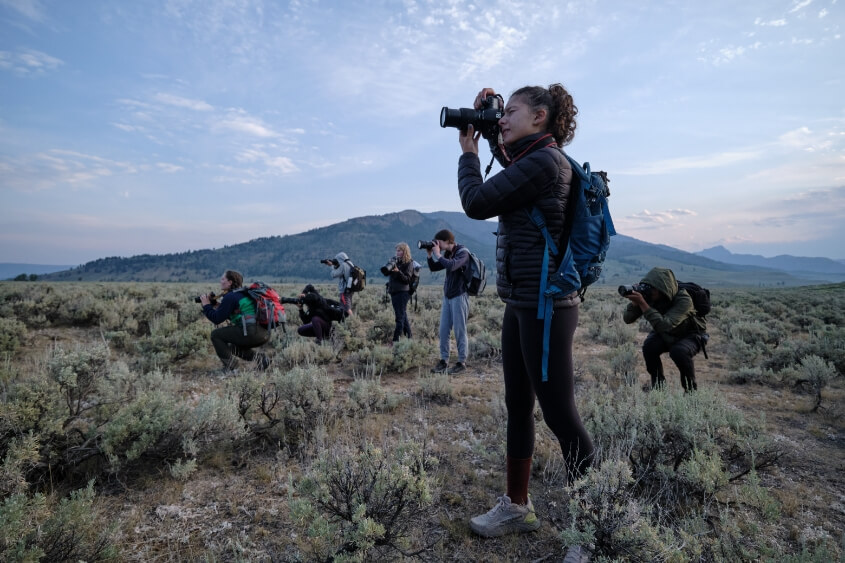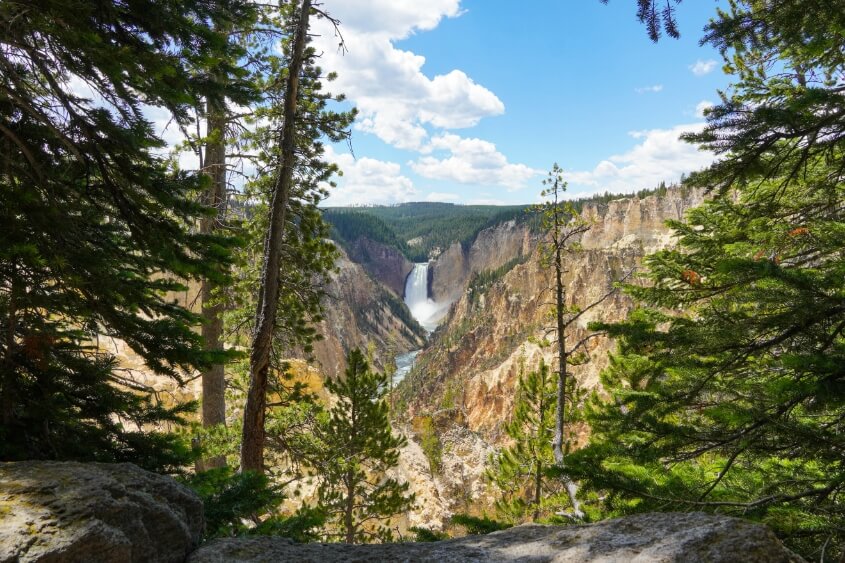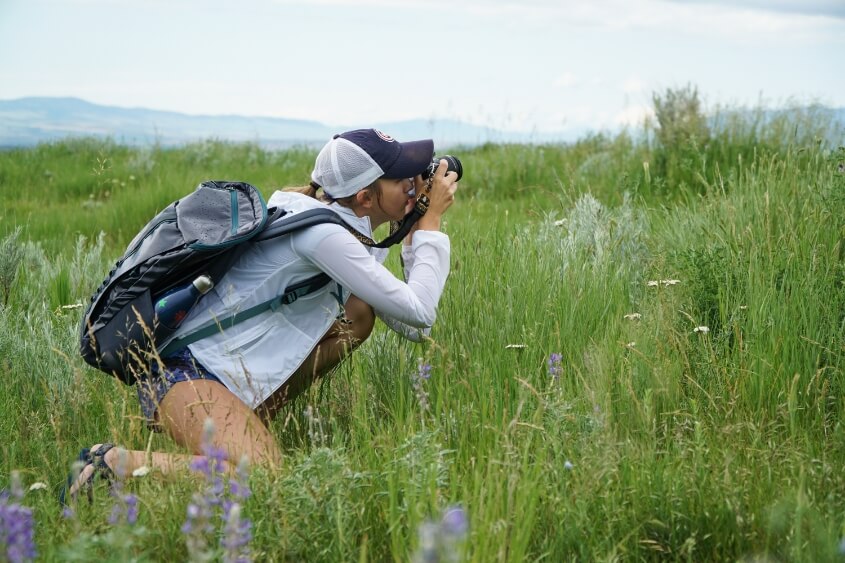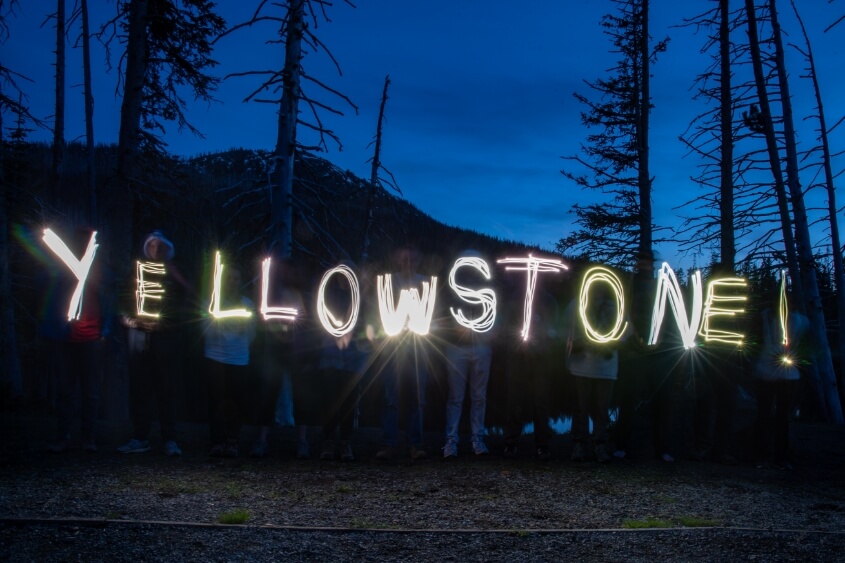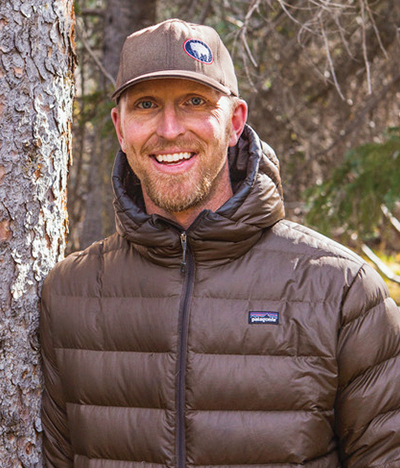Yellowstone
Photography Workshop in America's First National Park
With erupting geysers, endless grasslands teeming with wildlife, and gem-colored geothermal pools, Yellowstone National Park is the perfect place to explore the field of photography. This summer, venture into this geological wonderland with a team of talented photography instructors and your program expert to document bears and bison, pronghorns, wolves, elk, bald eagles, and more. Explore different photography techniques and styles through daily interactive lessons, take compelling landscape photos that capture the magic of this national park, and document its unique geologic phenomena through your camera’s lens.
- Highlights
• Explore Yellowstone’s Geyser Basin and photograph Old Faithful
• Head out on a sunset shoot to document bison and elk at dusk
• Whitewater raft down the Yellowstone River with experienced guides
Expert
2025 Expert will be announced soon!
Itinerary
This itinerary represents our best projection of the group’s schedule. However, we may implement changes designed to improve the quality of the program.
Meet your fellow high school student travelers and leaders in Bozeman, Montana. To learn more about how we organize travel, click here.
Begin your photo program with two nights in the mountain town of Bozeman, Montana, get to know your group, and prepare for your time in Yellowstone National Park. Once inside the park, delve into the art and technique of photography, working in small groups with your accomplished photo instructors and program expert. Head out on photo shoots each day, trying out new techniques with the wildlife and landscapes you encounter. Practice managing light and depth of field, work with flash, and learn to improve your composition. Then return to the classroom to review and edit your images and prepare for the next day’s assignment.
Settle into our accommodations near the National Park, and enjoy beautiful mountain views and opportunities to observe the park’s fascinating wildlife. Hone your eye for great landscape shots during visits to vibrant hot springs, geyser basins, and the Grand Canyon of Yellowstone. Find your adventurous spirit while hiking to dramatic vistas and through fields of alpine wildflowers.
In the evenings, tell stories around a campfire, review the day’s images, and work on editing your photos for final presentations. Head back out after dark to photograph Yellowstone’s nocturnal ecosystems. Capture the glow of golden hour during a sunset shoot in the Lamar Valley, practice taking wildlife photos in low lighting, and master the art of star photography under Yellowstone’s vast night sky.
Spend your last two days back in Bozeman, organizing and editing your work, and working with your group to curate and install a pop-up gallery show featuring each student’s original images.
Head to Bozeman’s Yellowstone International Airport for independent flights home, or arrange for parent or guardian pick-up from Montana State University dorms. To learn more about how we organize travel, click here.
Itinerary
This itinerary represents our best projection of the group’s schedule. However, we may implement changes designed to improve the quality of the program.
Meet your fellow high school student travelers and leaders in Bozeman, Montana. To learn more about how we organize travel, click here.
Begin your photo program with two nights in the mountain town of Bozeman, Montana, get to know your group, and prepare for your time in Yellowstone National Park. Once inside the park, delve into the art and technique of photography, working in small groups with your accomplished photo instructors and program expert. Head out on photo shoots each day, trying out new techniques with the wildlife and landscapes you encounter. Practice managing light and depth of field, work with flash, and learn to improve your composition. Then return to the classroom to review and edit your images and prepare for the next day’s assignment.
Settle into our accommodations near the National Park, and enjoy beautiful mountain views and opportunities to observe the park’s fascinating wildlife. Hone your eye for great landscape shots during visits to vibrant hot springs, geyser basins, and the Grand Canyon of Yellowstone. Find your adventurous spirit while hiking to dramatic vistas and through fields of alpine wildflowers.
In the evenings, tell stories around a campfire, review the day’s images, and work on editing your photos for final presentations. Head back out after dark to photograph Yellowstone’s nocturnal ecosystems. Capture the glow of golden hour during a sunset shoot in the Lamar Valley, practice taking wildlife photos in low lighting, and master the art of star photography under Yellowstone’s vast night sky.
Spend your last two days back in Bozeman, organizing and editing your work, and working with your group to curate and install a pop-up gallery show featuring each student’s original images.
Head to Bozeman’s Yellowstone International Airport for independent flights home, or arrange for parent or guardian pick-up from Montana State University dorms. To learn more about how we organize travel, click here.
Leaders
Meet some of our featured leaders. Please note that these may not be your leaders for the program.
Leaders
Meet some of our featured leaders. Please note that these may not be your leaders for the program.
Yellowstone boasts one of the largest ecosystems in the world, and is known for its diverse geothermal features, of which the Old Faithful geyser and the colorful Grand Prismatic Spring are key examples. For over 10,000 years, prior to Yellowstone’s designation as a national park, many Indigenous groups hunted, fished, gathered plants, quarried obsidian, and used the thermal waters for religious and medicinal purposes. Twenty-seven Native American tribes have historic and present day connections to the land and resources found within the park. As a national park, Yellowstone is a destination for spotting wildlife, hiking, and outdoor exploration. Bozeman is a small but lively western town of about 45,000 people. With an elevation of almost 5,000 feet and surrounded by several mountain ranges, Bozeman is a popular destination for outdoor enthusiasts and home to Montana’s largest university, Montana State University.
English is the official language of the U.S.
Summer in Bozeman and Yellowstone National Park is quite pleasant with daytime temperatures in the 70s–80s° F/21-27° C , dropping to the 50s–60s° F/ 10-16° C at night. Rain and changing temperatures can be expected.
Bozeman's food scene offers a diverse array of farm-to-table dining experiences, showcasing locally sourced ingredients and innovative dishes. The town boasts a mix of cozy cafes, gourmet restaurants, and vibrant food trucks, making it a culinary hotspot in Montana.
Yellowstone boasts one of the largest ecosystems in the world, and is known for its diverse geothermal features, of which the Old Faithful geyser and the colorful Grand Prismatic Spring are key examples. For over 10,000 years, prior to Yellowstone’s designation as a national park, many Indigenous groups hunted, fished, gathered plants, quarried obsidian, and used the thermal waters for religious and medicinal purposes. Twenty-seven Native American tribes have historic and present day connections to the land and resources found within the park. As a national park, Yellowstone is a destination for spotting wildlife, hiking, and outdoor exploration. Bozeman is a small but lively western town of about 45,000 people. With an elevation of almost 5,000 feet and surrounded by several mountain ranges, Bozeman is a popular destination for outdoor enthusiasts and home to Montana’s largest university, Montana State University.
English is the official language of the U.S.
Summer in Bozeman and Yellowstone National Park is quite pleasant with daytime temperatures in the 70s–80s° F/21-27° C , dropping to the 50s–60s° F/ 10-16° C at night. Rain and changing temperatures can be expected.
Bozeman's food scene offers a diverse array of farm-to-table dining experiences, showcasing locally sourced ingredients and innovative dishes. The town boasts a mix of cozy cafes, gourmet restaurants, and vibrant food trucks, making it a culinary hotspot in Montana.
What to Expect
Review specific program expectations here. For more general information:
This program is designed for students to learn photography skills in the classroom and apply them in one of the world’s most iconic and picturesque places. Students benefit from personal guidance from professional photographers and a program expert who have extensive experience in the field and working with students. Participate in daily photography lessons, edit-and-critique sessions, and field assignments. Capture photos of elk and bison, hone your eye on the colors of Wyoming’s canyons and geysers, practice star photography, and work on motion photography with Yellowstone’s many waterfalls. On some days, the group will prioritize waking up before sunrise, as the early morning hours are prime for spotting wildlife, and the soft, diffused light makes for stunning photographic opportunities. On other days, we may choose to extend our shooting hours into the evening instead. The late summer sunsets provide a unique opportunity to capture the landscape bathed in warm, golden hues and another good chance to see wildlife. Students will be split into smaller groups during interactive photography tutorials and experiences while coming back together as one big group for presentations, editing time, and classroom lectures. The program culminates with a pop-up gallery presentation of the students’ work, and students come away from the program with an improved understanding of camera controls and a solid understanding of how to create successful images.
To encourage full engagement and immersion in the Putney travel experience, we limit the use of cell phones and other devices on our High School programs. Students are allowed to use their phones in transit to the program, and keep their devices throughout. During in-country orientation, leaders will lock phones with a code, unlocking them for the second half of the program. During the tech-free portion of the program, students have the opportunity for a weekly call home according to a pre-arranged schedule. For more details, please see our FAQ.
This is a physically active summer travel program. This photography workshop includes several active excursions such as hiking and rafting. It is important that you have a desire to be active, and that you are interested in trying all activities, including hiking and rafting.
In Bozeman, we stay in dormitory-style single room accommodations. For our time in Yellowstone, we stay at a small lodge close to the entrance of the park. Classrooms are equipped with projectors so we can share and critique our work.
While on campus in Bozeman, the group takes the majority of their meals in the campus dining hall or outside with picnics and meals to order. In Yellowstone, we pack lunches for days of exploration, or stop at Yellowstone’s many cafeterias and restaurants.
What to Expect
Review specific program expectations here. For more general information:
This program is designed for students to learn photography skills in the classroom and apply them in one of the world’s most iconic and picturesque places. Students benefit from personal guidance from professional photographers and a program expert who have extensive experience in the field and working with students. Participate in daily photography lessons, edit-and-critique sessions, and field assignments. Capture photos of elk and bison, hone your eye on the colors of Wyoming’s canyons and geysers, practice star photography, and work on motion photography with Yellowstone’s many waterfalls. On some days, the group will prioritize waking up before sunrise, as the early morning hours are prime for spotting wildlife, and the soft, diffused light makes for stunning photographic opportunities. On other days, we may choose to extend our shooting hours into the evening instead. The late summer sunsets provide a unique opportunity to capture the landscape bathed in warm, golden hues and another good chance to see wildlife. Students will be split into smaller groups during interactive photography tutorials and experiences while coming back together as one big group for presentations, editing time, and classroom lectures. The program culminates with a pop-up gallery presentation of the students’ work, and students come away from the program with an improved understanding of camera controls and a solid understanding of how to create successful images.
To encourage full engagement and immersion in the Putney travel experience, we limit the use of cell phones and other devices on our High School programs. Students are allowed to use their phones in transit to the program, and keep their devices throughout. During in-country orientation, leaders will lock phones with a code, unlocking them for the second half of the program. During the tech-free portion of the program, students have the opportunity for a weekly call home according to a pre-arranged schedule. For more details, please see our FAQ.
This is a physically active summer travel program. This photography workshop includes several active excursions such as hiking and rafting. It is important that you have a desire to be active, and that you are interested in trying all activities, including hiking and rafting.
In Bozeman, we stay in dormitory-style single room accommodations. For our time in Yellowstone, we stay at a small lodge close to the entrance of the park. Classrooms are equipped with projectors so we can share and critique our work.
While on campus in Bozeman, the group takes the majority of their meals in the campus dining hall or outside with picnics and meals to order. In Yellowstone, we pack lunches for days of exploration, or stop at Yellowstone’s many cafeterias and restaurants.
A Day in the Life: Yellowstone
- Morning
- Afternoon
- Evening
A Day in the Life:
Yellowstone
- Morning
- Afternoon
- Evening

Program Directed by
If you have questions or would like to talk further about this program, please get in touch!




